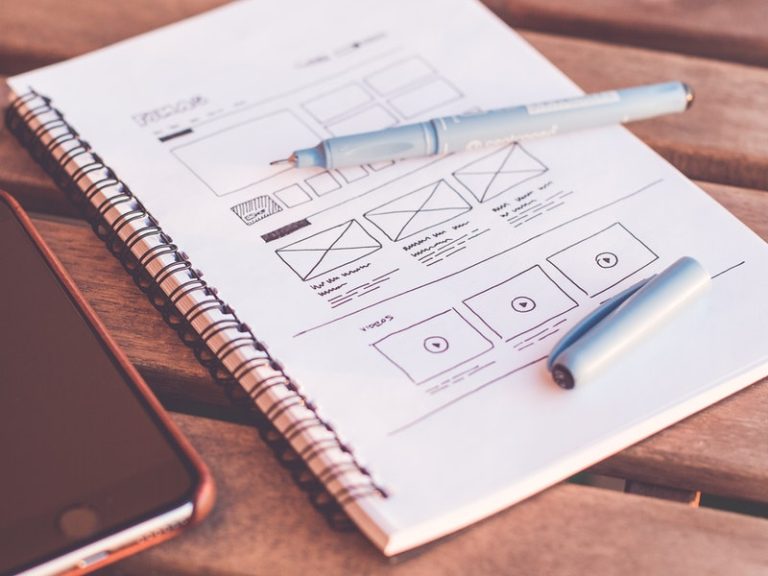A great way to boost your conversion rate is to create more variants of your messages and use A/B testing to decide which variant generates the most conversions. 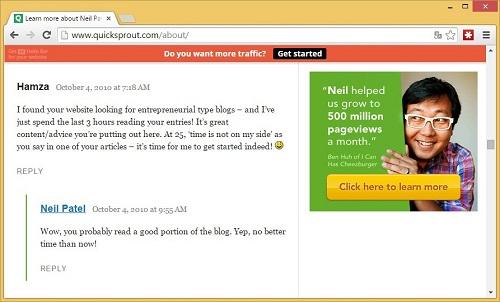
Google AdWords and Facebook are the most popular pay-per-click platforms that provide re-marketing services. These services display ads to people who have visited your site in the past while they are browsing other sites on the Internet or using an app. Consider setting up a re-marketing campaign using these platforms to display reminder ads to your past visitors after they’ve left your site.
[Tweet “A targeted #lead magnet such as free download can motivate readers to try your product details.”]
To help overcome this challenge, we’ve- gathered some of the most effective solutions that can be used to boost your site to above average conversion rates or boost your current conversion rates even higher.
1. Re-engage your abandoning visitors before they leave your site
Below Neil Patel’s nanobar can be seen. The nanobar appears and can be seen continuously at the top of his blog after a visitor has shown some engagement on his site.
The best way is to use a nanobar based on your visitors’ engagement. A nanobar should be displayed only for those visitors who shows an interest in your product or service. For example, configure the nanobar to display only for visitors who have browsed your site for at least X seconds or they’ve scrolled down to 50% of your page.
You can boost your efforts further by segmenting your visitors and communicating customized messages to them. A/B testing, re-marketing and setting up an auto-responder system can also help you increase your conversion rate.
So, if your website’s conversion rate is higher than 2%, give yourself a pat on the back, your site is above average! Or, consider this: increasing your site’s conversion rate from 2% to 3% would be a 50% improvement over the average.
In addition, if the browsing history of a visitor doesn’t show any special interest, he or she will get a universal message:
For visitors who are interested in Facebook advertising, Digital Marketer displays a Facebook-related give-away:
2. Personalize your communication
The online shoe retailer, ZooShoo was seeing a lot of people simply pass through their website without actually buying anything. They started to use an exit-intent popup. By promoting a coupon for a 10% discount, ZooShoo’s revenue increased by 7.35% in only two months, and they gathered more than 5,000 extra subscribers.
This example from Conversific.com demonstrates how to put this technique into practice. After testing two different headlines in their onsite re-targeting campaign, they were able to decide which message was the “winner” with the best conversion rate. In their test, the “winner” outperformed the “loser” by 47%.
To sum it up, boosting your site’s conversion rate is one of the hardest challenges for digital marketers these days. Re-engaging your abandoning visitors right before they leave your site provides you a unique way to get more subscriptions and sales immediately. You can use exit-intent popups or even nanobars for this purpose – these are most effective when they are used based on engagement.
When used correctly, an exit-intent popup can boost your conversion rate and increase your revenues by 15-20%.
What about those visitors, up to 98% (!!) on the average site who leave without converting? Should you simply let them go? Absolutely not! One of the most effective solutions is getting in touch with them again via email or using re-marketing in order to persuade them to visit your site again.
Approximately 15% of abandoning visitors can be recovered and converted into customers or subscribers by using exit-intent popups.
Exit-intent technology is based on monitoring the behaviour of your visitors. When someone is browsing your site and their behaviour indicates that they will probably to leave your site, for example by moving their mouse to close the window or browser, right before they click the closing X button, a popup appears with a special offer.
However, a slight improvement like this might seem like a easy job but marketers usually have trouble converting website visitors into customers over this percentage. Achieving even a 2% conversion rate is often a challenge.
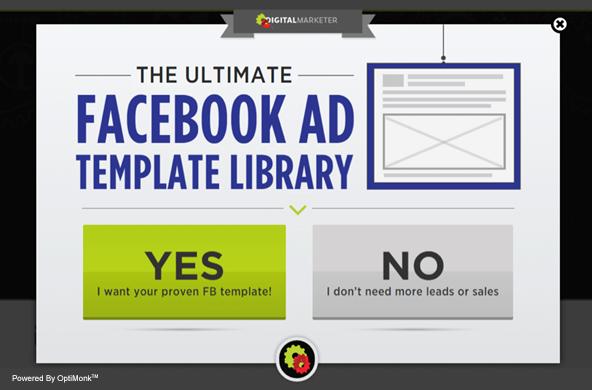

3. Use nanobars
It’s easier to convince those prospects who have spent some time on your website to buy something or subscribe at a later time than persuading entirely new visitors.
Consider creating fully customized messages for each of your segments and promoting unique offers to them. For instance, if you deal with products made for men and women, it isn’t practical to communicate the same message to both audiences.
In addition to increasing their website’s conversion rate, Kate Spade also tries to reduce their cart abandonment rate by using this follow-up email below. In their automated email they remind their prospects of the items that they’ve left without buying, and they offer a 15% discount coupon as well. The email also recommends some further products that the customer might also like. It’s a good example of a follow-up email.
If the browsing history of a visitor shows that he or she is interested in blogging, Digital Marketer tries to convert them into leads with a blog-related lead magnet:
It’s easier to convince prospects who have shown interest on your website to buy something or subscribe at a later time than persuading entirely new visitors.
4. A/B test your messages
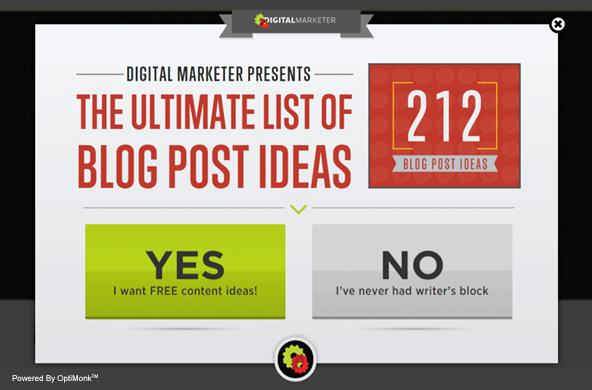
There’s little doubt that the conversion rate of a website is the most important indicator of its efficiency. But on average, 98% of visitors leave a website without buying or subscribing. This means that only 2 out of 100 visitors will convert.
Segmenting and personalizing your marketing offering around customer needs is the secret ingredient for online coversions..

5. Setup a re-marketing campaign and use email follow up emails
Promoting your best deals on a nanobar, also known as a “sticky notification bar”, can boost your chances for conversion. These bars provide a great way to raise your visitors’ attention to your best converting offers or your newsletter subscription.
This offer can be a downloadable e-book or other giveaways such as a coupon, free trial, free shipping, or even redirecting to a more interesting or better-converting page on your site.
To boost your conversion rate, follow-up with the people who have visited your site.
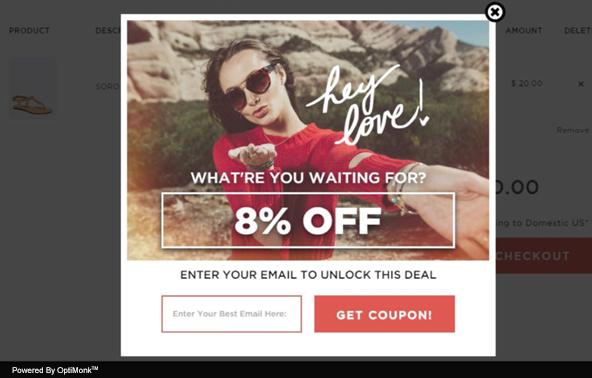
[Tweet “So many people want a high #conversion rate without #testing. Don’t be one of those people.“]
Communicating the same message to each person that visits your site kills your conversions. You should segment your visitors based on their interests, demographics or geographic variables, or even the stage of the visitor is in the buying process.
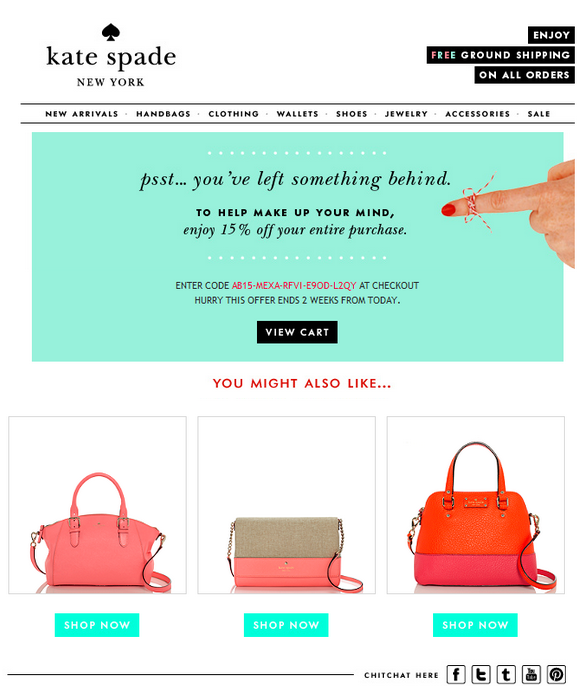
Here’s a great example from the well-known marketing blog Digital Marketer that always communicates the most customized messages possible.
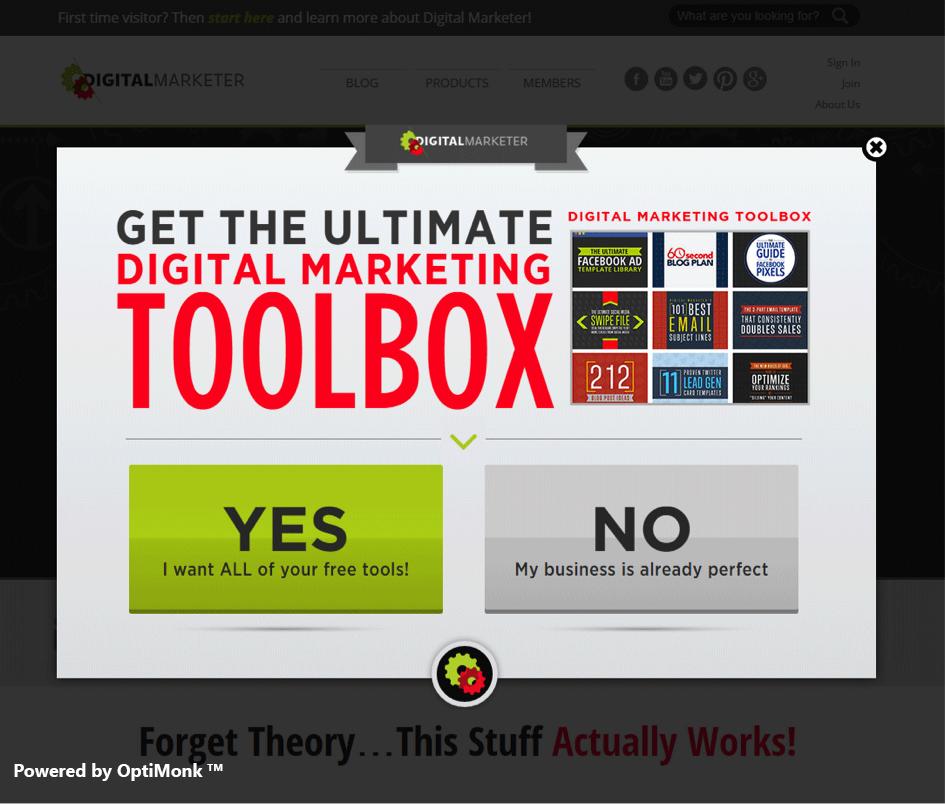
6. Conclusion
A/B testing allows you to test the content of your website, your landing pages, images, and even email messages – practically every part of your online communication can be tested. Exploit the ability to test all your messages by testing your primary and secondary messages, and then selecting the most engaging offer.
If you’ve gathered your visitors’ email addresses, sending emails is a great way to bring them back to the site and convert them into buyers. It’s best to send automated follow up emails after 1 day, 3 days, 1 week and 2 weeks. To boost your email marketing efforts use an advanced auto-responder system.

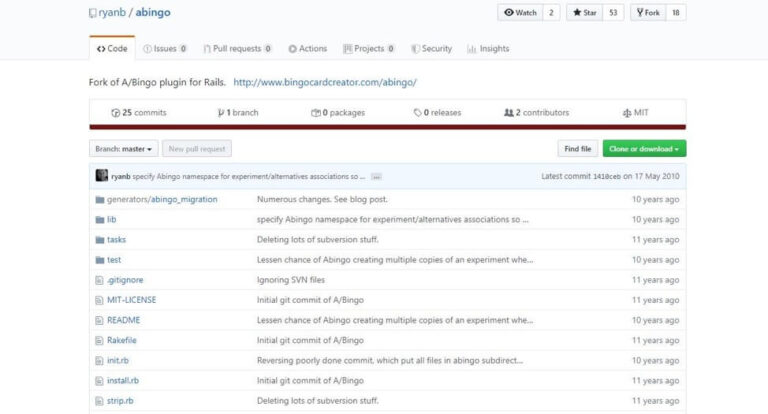
![78 [Not Overused] Holiday & Christmas Instagram Captions—with Templates!](https://research-institute.org/wp-content/uploads/2021/12/78-not-overused-holiday-christmas-instagram-captions-with-templates.jpg)

